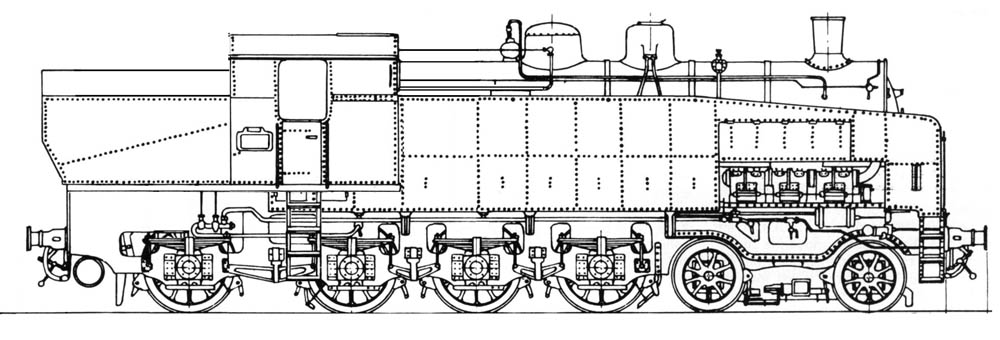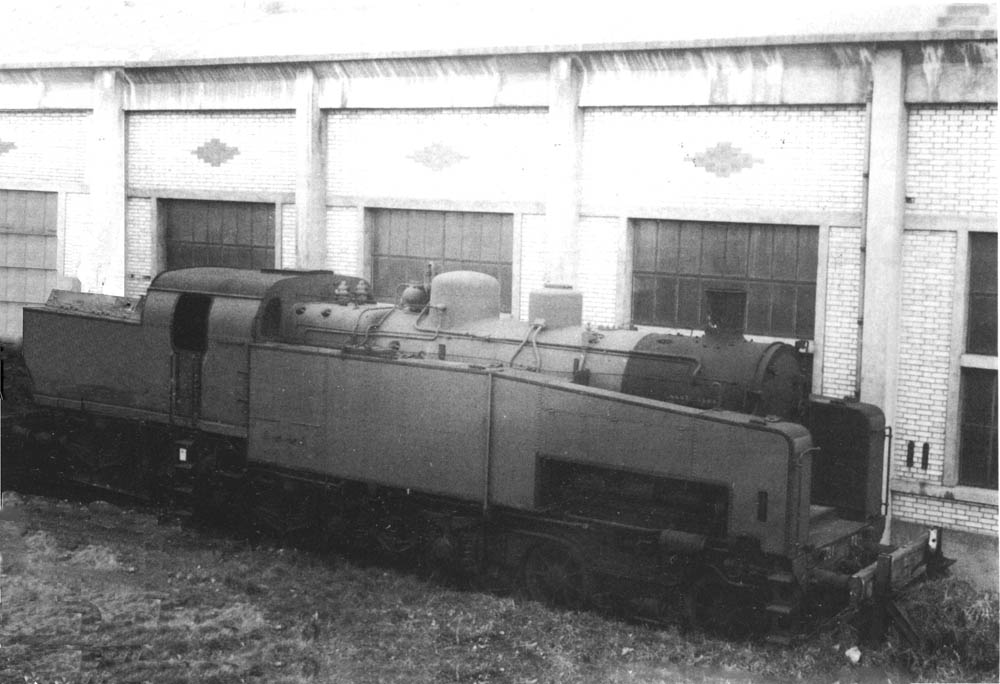

SNCF 231 TQ1
Country
France
Year
1938
Class
2'C 1 6 Cylinder steam-motor
4-6-2


Around the middle of the '30s in France there was a strong tendency to experiment with machines using high-pressure boilers and steam turbines of naval derivation with the aim of reducing operating costs, decreasing the time of immobilization for maintenance and increasing power and traction force.
This policy will give us several interesting machines of which this 231 TQ1 is a beautiful example.
Built on the basis of a 6-cylinder steam engine with a longitudinal transmission shaft and traction on three driving axles. The boiler stamping at 20 Kg/cmq gave the machine considerable power and the choice of locotender configuration a considerable range of use.
Built in collaboration between the Debaq of Le Castellet and the Batignolles-Chatillon, to which it normally supplied the distribution organs for the steam locomotives, it was an autonomous private project to be submitted to the SNCF. It was proposed in fixed composition with a light train composed of three bogie cars, a mail car and an observation car at the rear. It was intended for medium-distance trains on undulating lines and developed a speed of about 150 Km/h.
It seems that Francoise Louis Chapelon-Derniere, a second cousin on his mother's side of the great André Chapelon, was also involved in the construction of the machine. As a convinced supporter of the classic locomotive, he would have observed the projects with his usual Chambronnian expression. Louis was very impressed by it and retired from designing rail vehicles and started a flourishing gigolo business in the suburbs of Bourg en Bresse.
The machine, after an exhausting and inconclusive series of tests on the lines between Toulouse and Clemont-Ferrand, was discontinued to make way for the much more practical gas turbine "autorail".